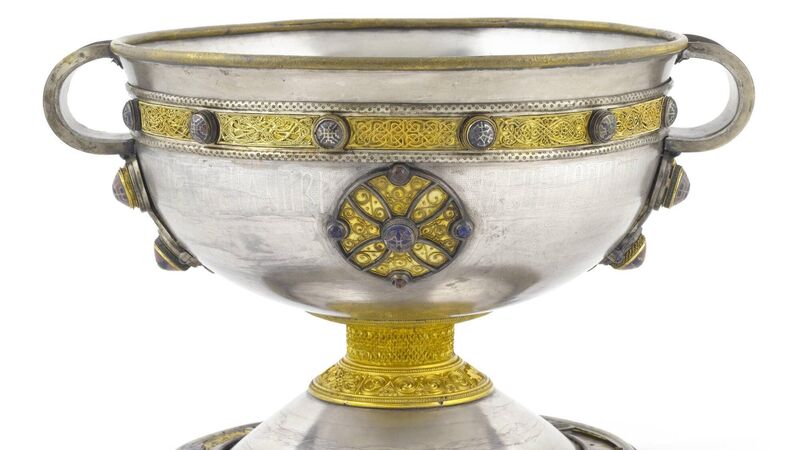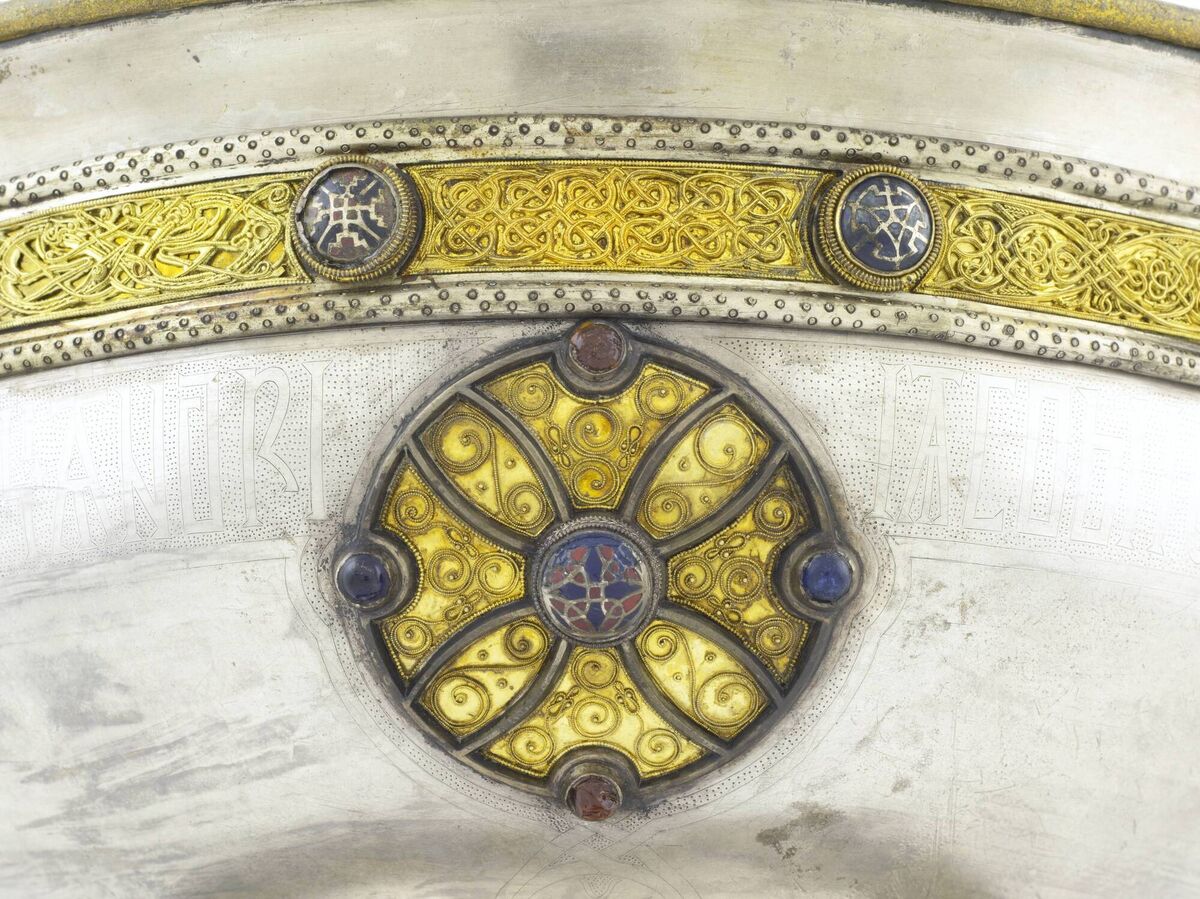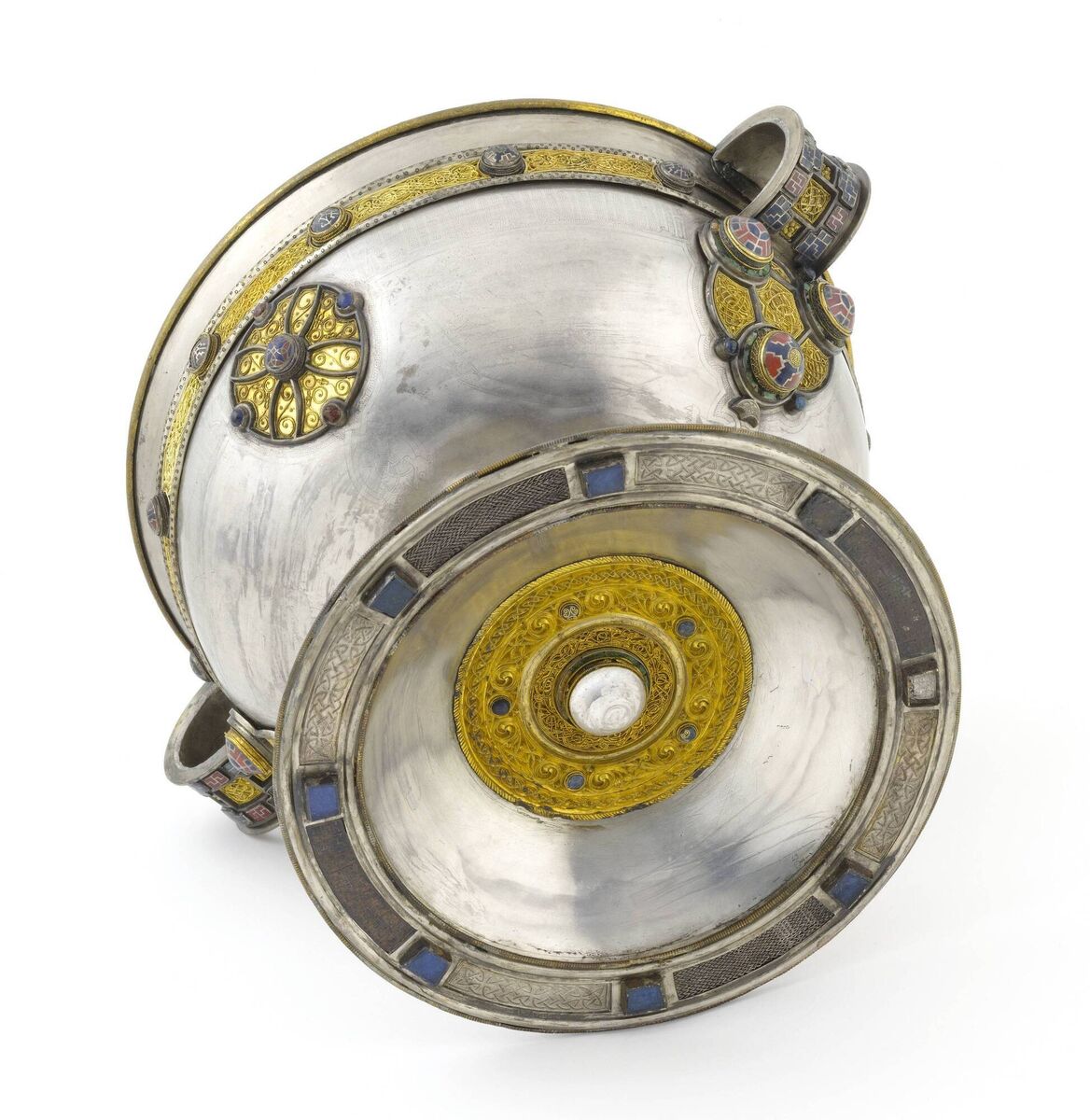Munster in 30 Artworks, No 17: The Ardagh Chalice, found in Co Limerick in 1858

The Ardagh Chalice. Pictures courtesy of National Museum of Ireland
The Ardagh Chalice is one of the great treasures of the National Museum of Ireland. According to an account written by the Earl of Dunraven in 1869, it was discovered by two young men at a ringfort called Reerasta near Ardagh, Co Limerick, in September 1858. The pair, Jim Quinn and Paddy Flanagan, were digging potatoes when Quinn’s spade struck metal. He reached down and unearthed the chalice, along with a plain bronze cup, four silver brooches and a wooden cross, beneath a slab of stone.
Quinn came from a poor farming family, for whom Flanagan worked as a labourer, and the hoard must have seemed like treasure beyond their wildest dreams. However, the land the Quinns were farming was not their own, but was merely rented, from an estate owned by the Sisters of Mercy.
The Catholic Bishop of Limerick, Dr George Butler, laid claim to the find, rewarding Quinn’s mother with £50, and then sold on the collection to the Royal Irish Academy. In some accounts, he received £100 from the Academy, though others claim it was as much as £500.
“At that time, the Academy had its own Museum of Antiquities,” explains Maeve Sikora, Keeper of Irish Antiquities at the National Museum of Ireland. “It was not until 1890 that the National Museum was established, and the Academy transferred its whole collection to this new institution. If a hoard like this was discovered today, the state would assume ownership on behalf of the people of Ireland.”

The Ardagh Chalice is believed to date to the 8th century AD, and is so beautifully made that it must have been a thing of wonder in its day, at least as much as it is now. “It’s without doubt the very finest Irish work in metal,” says Sikora, “and was made at a high point in Irish craftsmanship. The Book of Kells belongs to the same period.” The chalice is seven inches high, nine and a half inches in diameter, and four inches deep, and comprises 350 separate parts. The bowl and foot are made of spun silver, decorated with gold, silver, glass, amber and enamel.
"The names of St Paul and eleven apostles are inscribed on the outside, along with some spirals and animal figures. The handles are decorated with glass studs and gold filigree panels, while under the foot, there is a polished rock crystal, along with other decorations.
“The chalice would have been commissioned by the Church at a time when it was very wealthy,” says Sikora, “and played a hugely important role in Irish society. We can’t say for sure, but it was probably made in a workshop in Munster. There’s speculation that the patin from the Derrynaflan hoard was made by the same craftspeople.
“The chalice is so ornate that it would probably only have been used on special occasions. But some of the other items in the hoard, such as the bronze cup, were liturgical objects, and would have been more functional than ornamental. The latest object is one of the brooches, which dates to the late 9th century.”
Why the hoard was buried is not known, but the fact that none of the items were boxed or otherwise protected suggests they were concealed in haste. Some claim they must have been spirited away from a monastery to protect them from seizure by the Vikings.

Whoever was responsible must have either left Reerasta in a hurry or been killed, as they never came back to retrieve the treasures. “Whatever the circumstances, it must be assumed that the hoard was buried for safekeeping at a time of unrest,” says Sikora. “The fort would almost certainly have been in use as a homestead at the time.”
Little is known of what became of the two young men who found the hoard. Quinn emigrated to Australia, and is buried in Fawkner Memorial Park in Melbourne, where he died in 1934. As for Flanagan, some claim it was he who actually made the discovery, but he was denied credit because of his status as a labourer. He is reputed to have got just £10 as his share of the reward. He is buried at the Pauper’s Graveyard in Newcastle West.
In 1928, the Ardagh Chalice was used as the template for the Sam Maguire Cup, awarded each year to the winners of the All-Ireland Football Championship. The O’Duffy Cup, awarded to the winners of the Gala All-Ireland Senior Camogie Final, is also modelled on the chalice.
The chalice is one of the most popular items at the National Museum. “It’s on the Leaving Cert curriculum, in both History and Art,” says Sikora, “so a lot of students come to see it. But it’s internationally known. Obviously, the past few years have been difficult, but usually we would have at least 500,000 visitors at Kildare St every year, and most of them will stop to view the Ardagh Chalice and the other objects in the hoard.”
- Further information: museum.ie






